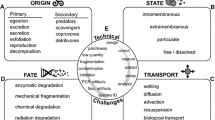Abstract
We developed and optimized a method using Chelex DNA extraction followed by whole genome amplification (WGA) to overcome problems conducting molecular genetic studies due to the limited amount of DNA obtainable from individual small organisms such as predatory mites. The DNA from a single mite, Phytoseiulus persimilis Athias-Henrot (Acari: Phytoseiidae), isolated in Chelex suspension was subjected to WGA. More than 1000-fold amplification of the DNA was achieved using as little as 0.03 ng genomic DNA template. The DNA obtained by the WGA was used for polymerase chain reaction followed by direct sequencing. From WGA DNA, nuclear DNA intergenic spacers ITS1 and ITS2 and a mitochondrial DNA 12S marker were tested in three different geographical populations of the predatory mite: California, the Netherlands, and Sicily. We found a total of four different alleles of the 12S in the Sicilian population, but no polymorphism was identified in the ITS marker. The combination of Chelex DNA extraction and WGA is thus shown to be a simple and robust technique for examining molecular markers for multiple loci by using individual mites. We conclude that the methods, Chelex extraction of DNA followed by WGA, provide a large quantity of DNA template that can be used for multiple PCR reactions useful for genetic studies requiring the genotypes of individual mites.



Similar content being viewed by others
References
Blanco L, Salas M (1984) Characterization and purification of a phage phi 29-encoded dna polymerase required for the initiation of replication. Proc Natl Acad Sci USA 81:5325–5329
Cheung VG, Nelson SF (1996) Whole genome amplification using a degenerate oligonucleotide primer allows hundreds of genotypes to be performed on less than one nanogram of genomic DNA. Proc Natl Acad Sci USA 93:14676–14679
Dean FB, Hosono S, Fang L, Wu X, Faruqi AF, Bray-Ward P, Sun Z, Zong Q, Du Y, Du J, et al. (2002) Comprehensive human genome amplification using multiple displacement amplification. Proc Natl Acad Sci USA 99:5261–5266
Gorrochotegui-Escalante N, Black WCt (2003) Amplifying whole insect genomes with multiple displacement amplification. Insect Mol Biol 12:195–200
Hughes S, Lim G, Beheshti B, Bayani J, Marrano P, Huang A, Squire JA (2004) Use of whole genome amplification and comparative genomic hybridisation to detect chromosomal copy number alterations in cell line material and tumour tissue. Cytogenet Genome Res 105:18–24
Jeyaprakash A, Hoy MA (2002) Mitochondrial 12S rRNA sequences used to design a molecular ladder assay to identify six commercially available phytoseiids (Acari: Phytoseiidae). Biol Control 25:136–142
Jeyaprakash A, Hoy MA (2004) Multiple displacement amplification in combination with high-fidelity PCR improves detection of bacteria from single females or eggs of Metaseiulus occidentalis (Nesbitt) (Acari: Phytoseiidae). J Invertebr Pathol 86:111–116
Jia F, Margolies DC, Boyer JE, Charlton RE (2002) Genetic variation in foraging traits among inbred lines of a predatory mite. Heredity 89:371–379
Kambhampati S, Smith PT (1995) PCR primers for the amplification of four insect mitochondrial gene fragments. Insect Mol Biol 4:233–236
Lage JM, Leamon JH, Pejovic T, Hamann S, Lacey M, Dillon D, Segraves R, Vossbrinck B, Gonzalez A, Pinkel D, et al. (2003) Whole genome analysis of genetic alterations in small DNA samples using hyperbranched strand displacement amplification and array-CGH. Genome Res 13:294–307
Margolies DC, Sabelis MW, Boyer JE Jr (1997) Response of a Phytoseiid predator to herbivore induced plant volatiles: Selection on attraction and effect on prey exploitation. J Insect Behav 10:695–709
Navajas M, Lagnel J, Gutierrez J, Boursot P (1998) Species-wide homogeneity of nuclear ribosomal ITS2 sequences in the spider mite Tetranychus urticae contrasts with extensive mitochondrial COI polymorphism. Heredity 80(6):742–752
Rusakova V, Nosek L (2006) Amplification of genome-representative DNA from limited sources with GenomePlex® WGA technology for use in genetic alterations studies. Nat methods 3:236–237
Sambrook J, Russell DW (2001) Molecular cloning: a laboratory mannual, 3rd edn. Cold Spring Harbor Laboratory Press, New York
Sorensen KJ, Turteltaub K, Vrankovich G, Williams J, Christian AT (2004) Whole-genome amplification of DNA from residual cells left by incidental contact. Anal Biochem 324:312–314
Telenius H, Carter NP, Bebb CE, Nordenskjold M, Ponder BA, Tunnacliffe A (1992) Degenerate oligonucleotide-primed PCR: general amplification of target DNA by a single degenerate primer. Genomics 13:718–725
Walsh PS, Metzger DA, Higuchi R (1991) Chelex 100 as a medium for simple extraction of DNA for PCR-based typing from forensic material. Biotechniques 10:506–513
Zhang L, Cui X, Schmitt K, Hubert R, Navidi W, Arnheim N (1992) Whole genome amplification from a single cell: implications for genetic analysis. Proc Natl Acad Sci USA 89:5847–5851
Acknowledgements
We thank Prof. Salvatore Ragusa, Universita degli Studi di Palermo, Palermo, Italy for supplying P. persimilis from Sicily; Xiaoli Wu for help with colony maintenance; Ju Lin Weng for helping assess yield of DNA; and Srini Kambhampati, Mark Ungerer and Kun Yan Zhu for their valuable comments on an earlier draft of this manuscript. This study was funded under the Kansas NSF EPSCoR, Ecological Genomics Project. This is Contribution No. 07-71-J from the Kansas Agricultural Experiment Station.
Author information
Authors and Affiliations
Corresponding author
Rights and permissions
About this article
Cite this article
Konakandla, B., Park, Y. & Margolies, D. Whole genome amplification of Chelex-extracted DNA from a single mite: a method for studying genetics of the predatory mite Phytoseiulus persimilis . Exp Appl Acarol 40, 241–247 (2006). https://doi.org/10.1007/s10493-006-9042-1
Received:
Accepted:
Published:
Issue Date:
DOI: https://doi.org/10.1007/s10493-006-9042-1




